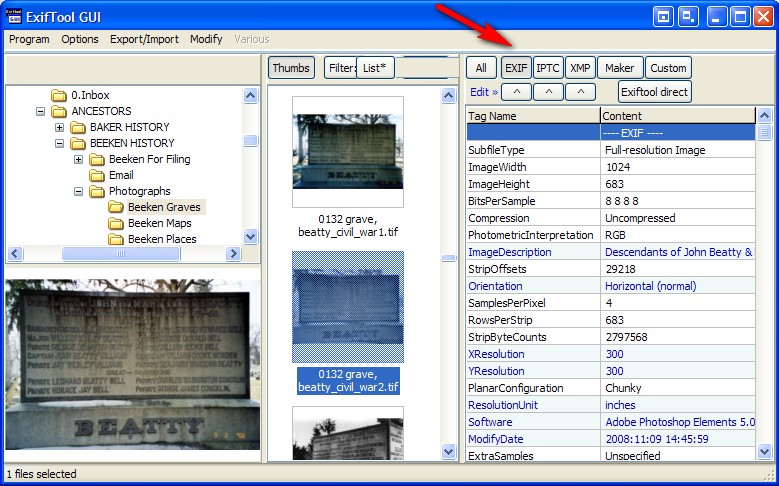

#Exiftool by phil harvey review install
I’m also showing a way to run the Apache Tika tool that reads metadata from files under Windows without having to use Java! The reason this is fun is Tika reads a TON of file formats but is written in Java and I don’t like to install Java unless required and this will let you use it on any machine running. I’ll list some tools I recommend for validating metadata results from documents and images below. So, if I hadn’t suggested digging deeper the metadata might have been missed… Metadata tools The same exercise could have been conducted using Tika or ExifTool. Sure enough multiple fields including ‘author’, ‘last modified by’, and more were present! In this instance file properties under Windows only showed the ‘content created’ and ‘date last saved’. In this case renaming the xlsx to gzip and unzipping it to read the. This looked fishy to me so I suggested that more data could be present by inspecting the file manually. xlsx document that showed only ‘content created’ and ‘source modified’ as the document properties. In this case a colleague was reviewing an office.
#Exiftool by phil harvey review software
In this case the software uses file extensions to determine file type on a standard pass and if you didn’t run an extra processing option to have it use the magic header/document signature to determine document type the forensic tool would not parsed the metadata completely. Some obscure document types have spotty records with even the most popular commercial software. Sometimes its because you are running an old version, other times because you did not select the proper check box when processing, and other times the tool just does not support the document format. I have been reminded once again that commercial tools can miss document metadata.

Always read the release notes! It’s best practice to always test your tools to ensure you are not only getting accurate results but also as many results as possible! Scenario When using commercial products to some investigators trust the information from the commercial tools they paid licenses to use without validating the results using a secondary tool or reading the ‘release notes’ for caveats. If metadata is a new/confusing term for you then go read about it: But for those of us in the digital forensics and the field of information security metadata has always been critical to our investigations. So much knowledge can be gleamed from the review of metadata from pictures and documents that it’s a big topic in the news. Tags labelled "File:System" are stored in the filesystem, while other tags are stored in the location indicated inside the metadata of the file itself.Metadata is critical to any investigation.

The -G0:1 option causes the family 0 and 1 group names to be reported in square brackets for each tag. A command like this may be used to extract all date/time information with an indication of where it is stored:Įxiftool -time:all -a -G0:1 -s c:\images\test.jpgĪnd should give an output something like this: There is sometimes confusion between date/time values stored in the metadata of the file itself and date/time values stored in the filesystem (ie.

"When I write a file the date/time gets reset to today's date" From the FAQ for exiftool I find the following:Ģ4.


 0 kommentar(er)
0 kommentar(er)
